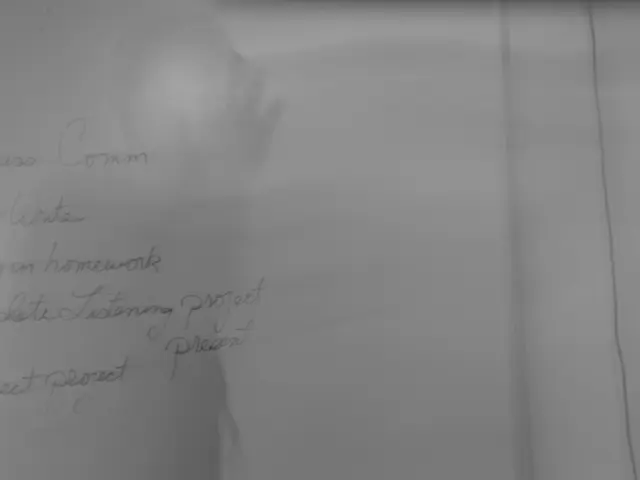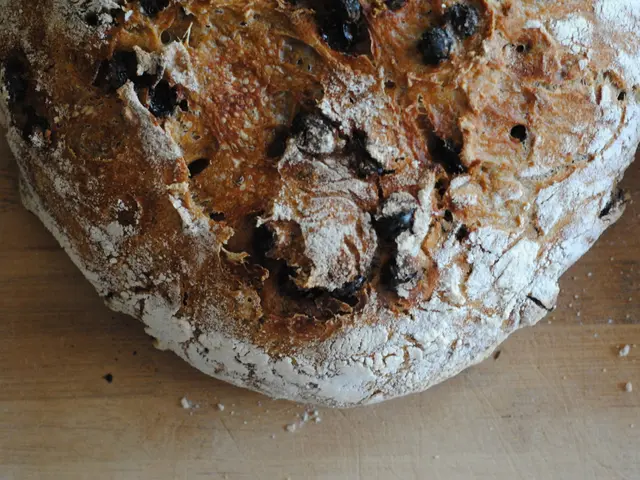Experiencing the World Beyond Sight: Depicting Reality Through Hidden Sensory Perspectives
Get your imagination up and running with these tips on breath-taking storytelling! Meander beyond the eyes and invite readers into a realm where narratives linger long after the final page.
Sensory Storytelling Explained
Everyone talks about what they see, whether it's colors, shapes, or landscapes. But true stories burst forth through more than just sight! Harness the unparalleled power of sounds, smells, textures, and flavors to create unforgettable art.
Close your eyes and conjure a powerful memory - chances are, you don't recall a photographic snapshot, but rather the sounds, scents, and textures that built that moment.
In writing too, capturing these intangible senses deepens immersion and magnifies emotional impact. Here's how to elevate your work by delving deeper than the visible realm.
Embracing a Rich Palate of Senses
1. The Tactile Hierarchy
There's a hierarchy to the senses that we, as writers and readers, naturally lean on. To engage your audience and truly allow them to inhabit your narratives, consider altering this hierarchy:
- Hearing - Ambience, character traits, and sound contrasts create distinct ambiances, set scenes, and awaken emotions.
- Touch - A versatile tool for expressing temperature, texture, weight, and movement, touch signifies intimacy, comfort, and danger.
- Smell - A powerful memory enhancer, nose-tingling smells can evoke vivid emotions and provide subtle context.
- Taste - While underutilized in fictional writing, taste can provide subtle yet potent emotional cues, reflect character state, and confer cultural significance.
- Vision - Visual detail is undeniably important - but use it wisely, and let the other senses breathe life into your scenes.
2. Benefits of Diversifying the Sensory Palate
- Builds Emotional Intensity: Intimate and personal, non-visual details hook readers and foster powerful emotional resonance.
- Expands Immersion: Rather than passively observing the action, readers feel themselves submerged in the setting, embodying the narrative.
- Signals Emotion: Non-visual details can subtly denote characters' internal states, bypassing the need for explicit emotional dissection.
- Shapes Tone: Crafting a cold room with metallic undertones imbues it with an entirely different atmosphere than one echoing with footsteps and enveloped in the scent of warm bread.
A Symphony of Sounds
Enhance the rhythm, characters, and moods of your writing by leveraging the power of sound - whether ambient or character-driven.
1. Writing Effective Sound
A) Ambient Sound
- Embrace background noises: distant thunder, buzzing lights, murmuring crowds.
B) Character-Based Sound
- Detail how characters walk, chew, and breathe to capture their unique traits and nuances.
C) Contrast Sound
- A harmonious setting with an unfamiliar sound brings both tension and curiosity, like a sudden cough in a quiet room or a forgotten glass shattering in another room.
Exercise: Craft a scene using sound alone to establish mood, tension, and familiarity as a character walks through a house.
The Art of Touch
Touch is the forgotten intimacy in storytelling - it grounds readers in physical experiences and creates powerful connections. Review the types of touch you can use in your writing:
A. Temperature: Cold metal, warm bread, sweat on skin, and the crisp warmth of winter air.
B. Texture: Silk sheets, rough stone, smooth glass, a sticky doorknob, and cracked earth under foot.
C. Weight: A gentle hand on a shoulder, the body sinking into a too-comfortable chair.
D. Movement: Wind brushing against skin, the vibration of a phone in your pocket, or a batting heart under the cold hand of a loved one.
Exercise: Compose a reunion scene where tactile and olfactory cues evoke powerful emotional responses - without a single word of dialogue.
The Poignant Power of Smell
Smell bypasses logic and strikes directly at our emotional cores, making it an ideal narrative tool.
A. Using Smell for Narrative Impact
- Memory Triggers: A certain cologne, the scent of a lover's perfume, or the lingering odor of a childhood favorite food can elicit vivid memories and drive the narrative forward.
- Uncomfortable Scents: The scent of antiseptic, smoke, mildew, or rotting fish can create a sense of disquiet.
- Deepening Setting: Every location has its unique scent, conveying culture, time period, and setting through the power of olfaction.
Exercise: Create a detailed description of a location entirely through scent, allowing the smells to reveal the true nature of the place.
Savor the Subtlety of Taste
Taste may seem superfluous in writing, but it's a powerful tool for mood-setting and intimacy.
A. When to Use Taste
- Reflecting Mood: Food loses flavor in a depressed mood. It's sweet in the throes of passion. By carefully employing culinary details, you can illuminate characters' emotions.
- Emotional Triggers: A specific dish can transport a character to a cherished memory or cause emotional turmoil.
- Intimacy: Taste is internal; communicating it transports readers into the heart of a character, deepening emotional impact.
Exercise: Develop a scene involving a character preparing and eating a meal alone, using taste to convey their emotional state without explicit expression.
Crafting a Complete Story
Combining multiple senses propels your narrative into a richer, more immersive experience. Don't be afraid to interweave the individual senses to craft a comprehensive tapestry that enthralls and captivates your readers.
The Varied Uses of Sensory Imagery
- Multisensory Descriptions: String together different senses to create a vivid, all-encompassing scene.
- Emotional Resonance: Ensure sensory details serve a purpose and contribute to the emotional resonance of the scene.
Bear in mind the potential pitfalls of overusing sensory imagery. Offer your readers a balanced, artful composition.
Engage your Senses, Elevate your Stories
By blending the five senses into your writing, you create a world that resonates with readers on a deeper level. Challenge yourself to write scenes without visual cues, and embrace the myriad hues, tones, and textures that await you beyond the visible realm.
Happy writing!
- Delve into the realm of fashion-and-beauty by describing the texture and luster of a character's gown, evoking sensory details that transport readers into the scene.
- To reflect a character's health-and-wellness, consider describing their taste preference for a particular food or drink, indicating how their diet mirrors their emotional state.
- While cooking, a sudden sound of sizzling meat can hint at the arrival of a character, adding tension and anticipation in the narrative.
- Engage readers with the scent of food-and-drink, whether it's the mouthwatering aroma of freshly baked bread or the pungent odor of spoiled milk, as a means to convey a sense of place and mood.
- Employ sound and touch simultaneously to evoke a more engaging storytelling experience, such as the creaking of a wooden door, captured through touch and the sound of footsteps, to signal a character's arrival.







